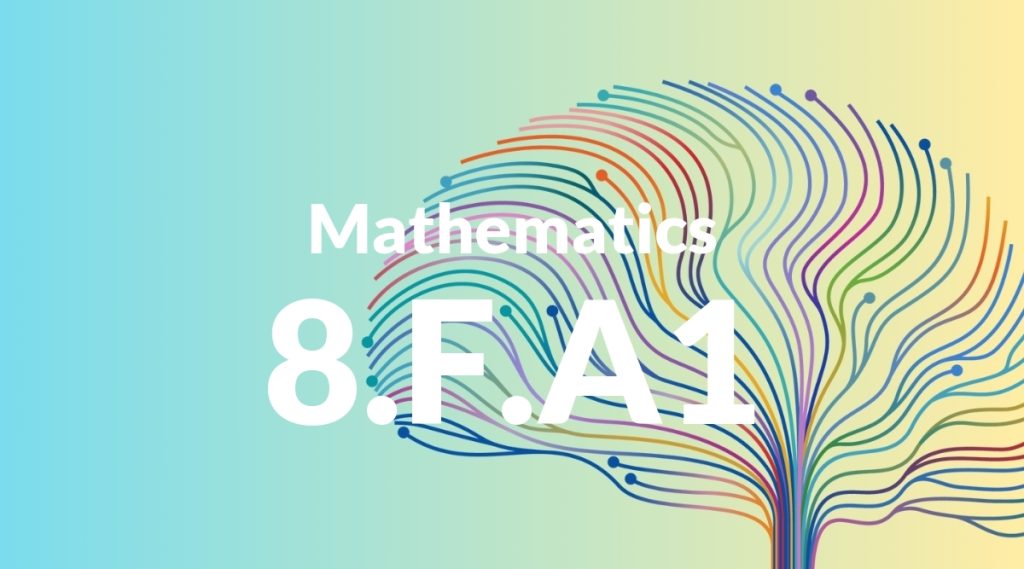Standard: 8.F.A1 – Understand that a function is a rule that assigns to each input exactly one output. The graph of a function is the set of ordered pairs consisting of an input and the corresponding output.
Grade level: Grade 8
Subject: Mathematics
Domain: Functions
Teacher Overview
This standard focuses on understanding the concept of functions, which is fundamental in mathematics. It emphasizes that a function assigns exactly one output to each input and that the graph of a function consists of ordered pairs of inputs and outputs. This understanding is crucial for analyzing relationships between quantities and for more advanced studies in algebra and calculus. Students should be familiar with ordered pairs, coordinate planes, and basic algebraic concepts. They should be able to plot points on a graph and understand the concept of variables and simple equations.
Mastering this standard will enable students to analyze and interpret functions, work with both linear and nonlinear functions, and apply their understanding to solve real-world problems. This knowledge is foundational for higher-level mathematics, including algebra and calculus.
Common Misconception 1
A common misconception is that a function can have multiple outputs for a single input. This is incorrect because, by definition, a function assigns exactly one output to each input. Allowing multiple outputs for a single input would violate this fundamental property.
Intervention 1
To address this misconception, use visual aids such as mapping diagrams or function machines. These tools can help students see that each input is paired with only one output, reinforcing the definition of a function.
Common Misconception 2
Another misconception is confusing the graph of a function with other types of graphs, such as scatter plots. Students might not recognize that a function graph represents a specific relationship where each input has a unique output.
Intervention 2
To remediate this, provide clear examples and non-examples of function graphs. Highlight the unique relationship between inputs and outputs in function graphs, and contrast this with scatter plots or other types of graphs.
Prerequisite Knowledge
Students should have a solid understanding of ordered pairs, coordinate planes, and basic algebraic concepts such as solving simple equations and understanding variables.
Subsequent Knowledge
After mastering this standard, students will be able to analyze and interpret functions, work with linear and nonlinear functions, and apply their understanding of functions to more complex mathematical and real-world problems.
Instructional Activities
- Create a function machine activity where students input numbers and observe the outputs.
- Graph various functions on coordinate planes and identify patterns.
- Use real-world data to create and analyze function graphs.
- Engage in group discussions to explore different types of functions and their properties.
- Solve problems involving functions and their graphs in a variety of contexts.




